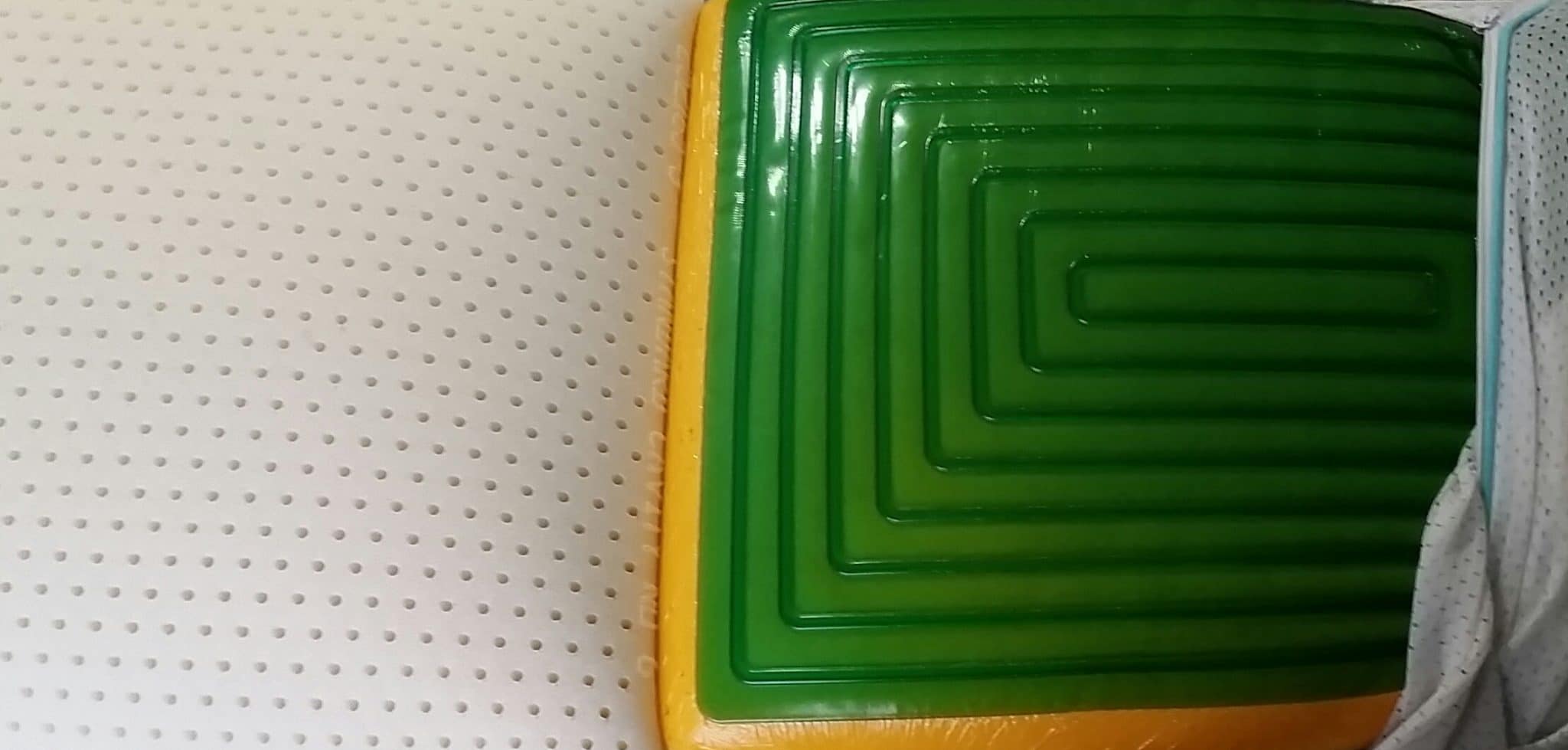Since you might be the hasty type, here’s the conclusion up front: Latex foam, specifically Talalay Latex, is the best mattress material. That’s not to say that other foams can’t provide you with an adequate night’s sleep, but nothing will cradle you in the perfect combination of comfort and support quite like Talalay Latex. There’s are a a bunch of reasons why this is true, some scientific and some anecdotal, so keep reading!
What Is Memory Foam?
Memory foam, sometimes called Visco after its viscoelastic properties, is a type of polyurethane foam developed in 1966 by NASA’s Ames Research Center for use in aircraft/shuttle seats. The original idea was to make a foam that deadened impacts for safety in the event of accidents, and somewhere along the line this fun little foam has made it into everything from mattresses to sports equipment.
It’s called memory foam specifically because for a short period after deforming it, the foam will “remember” it’s shape. If you press your hand into a block of memory foam for 10 seconds and remove it, your crisp hand print will stay in the foam for about 10 more seconds until the foam slowly goes back to its original shape. Frankly it’s pretty neat, and while the NASA pedigree makes a fun anecdote, there are some drawbacks that make memory foam less than ideal for use in mattresses.
Temperature’s Impact On Memory Foam
Although memory foam is touted for relieving pressure on the body while recumbent, its “slow spring back” characteristics cause it to feel very firm when rolling over or changing positions. Memory foam also has significant issues with temperature, meaning it becomes very firm in the cold and very soft in the heat. Those fancy viscoelastic properties that make memory foam samples so fun to play with in mattress showrooms are the same properties that cause this issue: as a viscous solid foam, its flexibility changes with temperature.
If your A/C breaks down in the middle of July, you’re going to find yourself sleeping (or trying to sleep, anyway) on a much softer mattress or pillow than originally intended. On top of this variability at different temperatures, memory foam tends to hold heat and sleep warmer than other foams.
Newer “third generation” memory foams, sometimes known as gel memory foam, have special additives that are designed to help regulate temperature. These additives range from gel microbeads to something called phase change materials, but the benefits are not particularly long lasting and have an undesirable effect on durability.
As you can see in the image below, the pillow on the right, which is memory foam has the “cooling gel” that consumers believe with improving how cool the pillow sleeps. The best way to regulate temperatures in foam is with airflow, which is what the latex pillow on the left does.

What is Latex Foam?
Latex foam is a foam commonly made from the latex product of the Hevea brasiliensis tree, sometimes known as a rubber tree. The trees are tapped to produce a milky substance that is then refined and eventually becomes what we know as latex. This latex material can then be made into latex foam by two different processes: Dunlop or Talalay.
Dunlop vs Talalay Latex Foam
The Dunlop process takes the latex ingredients and pours them into a giant pan with heating pins throughout, then seals the mold and bakes the latex to produce finished foam. The Talalay process is fairly similar with two major steps added before baking: the mold contents are pulled by a vacuum (ensuring equal distribution of the latex material and uniform density in the finished product) and flash frozen to stabilize cell structure. Although Dunlop latex exhibits many of the same material qualities as Talalay latex, Dunlop is unable to provide the uniformity, durability, or breathability that Talalay latex is famous for.
What is Talalay Latex Foam?
The Talalay process, named after the three brothers who pioneered it, creates an incredibly uniform type of latex foam that holds the same density throughout the material. Talalay latex is a bit like memory foam in that it feels elastic, but with immediate return to its original shape. It is more flexible than memory or even traditional polyurethane foams largely in part due to its rubber base. Talalay latex is offered in many different levels of firmness, and Talalay latex mattresses almost always use multiple different firmnesses to create the right feel for sleepers.
Talalay Latex Is Better With Heat Than Memory Foam
Unlike memory foam, Talalay latex is considered to be a cool sleeping material, with excellent heat exchange being attributed to both the cell structure and molding process (the pins previously mentioned in the Talalay process leaves small holes that allow for excellent airflow). While memory foam performs differently at different temperatures, Talalay latex mattresses do not: the Talalay latex will be the same density at an extremely wide range of temperatures.
When you’re braving that July A/C blackout, a Talalay latex mattress is the perfect thing to keep you cool. In this video from Talalay Global, you will see the difference in airflow between Talalay latex foam and other latex foam.
At Custom Sleep Technology, we think the choice is clear: memory foam just can’t hold a candle to Talalay latex. Talalay latex mattresses are more durable, last longer, sleep cooler, and are more comfortable than their competition. Our Platinum and Diamond models of the Color Comfort Sleep System™ mattresses are 100% Talalay latex, and 100% customized to each individual customer. We feel there’s truly nothing better than a customized Talalay latex mattress for a good night’s sleep

